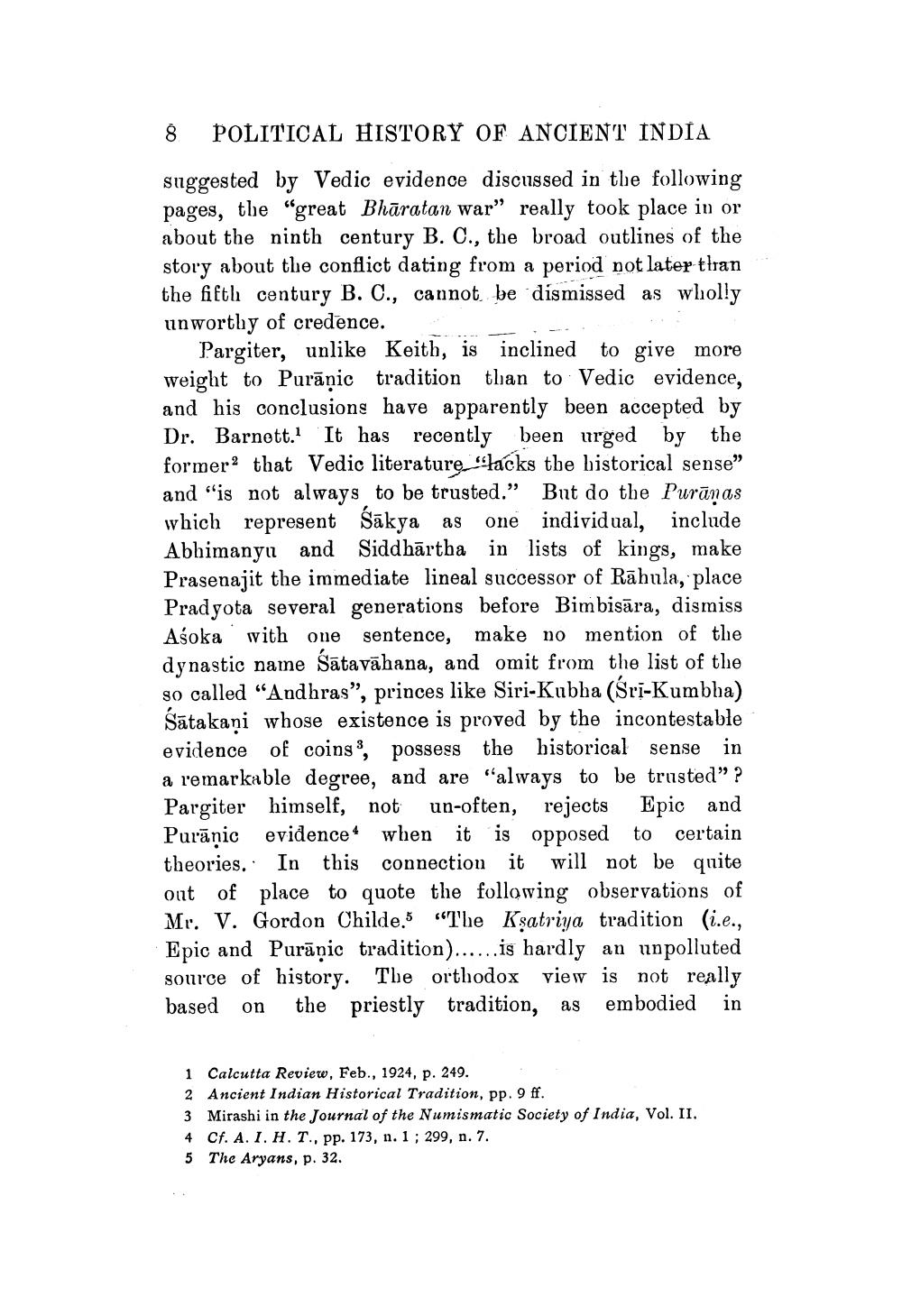________________
8 POLITICAL HISTORY OF ANCIENT INDIA suggested by Vedic evidence discussed in the following pages, the "great Bhāratan war” really took place in or about the ninth century B. C., the broad outlines of the story about the conflict dating from a period not later than the fifth century B. C., cannot be dismissed as wholly unworthy of credence.
Pargiter, unlike Keith, is inclined to give more weight to Purāṇic tradition than to Vedic evidence, and his conclusions have apparently been accepted by Dr. Barnett. It has recently been urged by the former? that Vedic literature lacks the bistorical sense" and “is not always to be trusted.” But do the Purānas which represent Sākya as one individual, include Abhimanyu and Siddhārtha in lists of kings, make Prasenajit the immediate lineal successor of Rāhula, place Pradyota several generations before Bimbisāra, dismiss Asoka with one sentence, make no mention of the dynastic name Śātavāhana, and omit from the list of the so called "Andhras”, princes like Siri-Kubha (Sri-Kumbha) Šātakaội whose existence is proved by the incontestable evidence of coins 3. possess the historical sense in a remarkable degree, and are “always to be trusted” ? Pargiter himself, not un-often, rejects Epic and Purāņic evidence when it is opposed to certain theories. In this connection it will not be quite out of place to quote the following observations of Mr. V. Gordon Childe.5 "The Ksatriya tradition (i.e., Epic and Purāṇic tradition)...... is hardly an unpolluted source of history. The orthodox view is not really based on the priestly tradition, as embodied in
1 Calcutta Review, Feb., 1924, p. 249. 2 Ancient Indian Historical Tradition, pp. 9 ff. 3 Mirashi in the Journal of the Numismatic Society of India, Vol. II. 4 Cf. A. I. H. T., pp. 173, n. 1 ; 299, n. 7. 5 The Aryans, p. 32.




